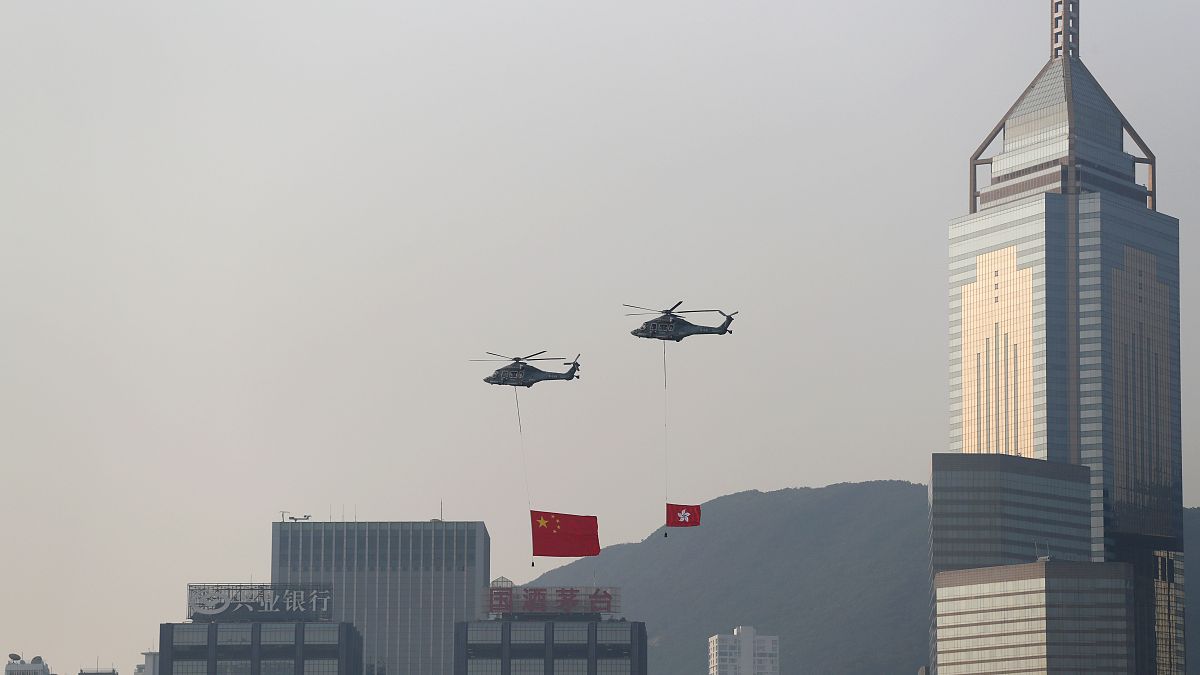Numerous protestors told The Cube that they will continue until all their demands are met. "All five and not one less" has become a key rallying cry during the demonstrations.
Tear gas and violence have become common in Hong Kong, with protests showing no sign of abating. How did the unrest begin and what is the back story?
What triggered the protests?
An Extradition Bill was introduced to the Hong Kong Parliament in April 2019 by the city's Chief Executive, Carrie Lam. If passed, Hong Kong citizens could have been extradited to mainland China to face trial on a case-by-case basis.
The legislation stemmed from a case where a Hong Kong woman was murdered while in Taiwan. Her killer was unable to face charges in Taiwan, as there was no reciprocal extradition arrangement.
The bill put forward became a cause for concern for many, with protesters citing the bill as a step toward the erosion of their autonomy. Critics of the bill said that it would tilt Hong Kong's government toward authoritarianism and at the hands of the Chinese judiciary, which human rights group say is plagued with torture.
How long have the protests been ongoing?
Thousands began to demonstrate when the bill was first introduced. Those quickly gained momentum, with an estimated two million taking to the streets on June 17, according to organisers. Although the protests began peacefully, they turned violent on July 1 when broke into the Legislative Council building and vandalised it.
Despite sustained opposition, the Hong Kong government and Lam refused to formally withdraw the bill. By July 9, in a televised address, Lam said that the bill was "dead". But this language was not enough to satisfy protesters, who demanded the bill be formally withdrawn.
The protests continued to gain momentum, with tear gas and clashes on the streets becoming a common theme. The relationship between authorities and protesters deteriorated into July and hit a significant low when unidentified men in white t-shirts flooded Yuen Long station, stormed a train and attacked passengers and media. Clips of the incident went viral on social media, with much blame pointed at police for failing to arrive on time to break-up the incident.
The protests shifted from a weekend-only movement into a round-the-clock resistance. On July 30, Hong Kong police announced that 45 people had been arrested — the first mass arrests since the protests began — and charged with illegal assembly, an offence that can carry up to a 10-year prison sentence upon conviction.
On August 11, a woman became a symbol of the protests after she was shot in the eye with a pellet during demonstrations and footage circulated on social media . Covering the right eye became a symbolic gesture, while the hashtag #eye4hk was used to spread the message of her injury but also their demands to the government.
In mid-August, protesters stepped up their tactics by periodically occupying Hong Kong International Airport, paralysing travel. It caused the cancellations of hundreds of flights over a two-day period with violent clashes between demonstrators and police at one of the world's busiest aviation hubs. Despite this, the government made no moves by this stage of removing the controversial extradition bill from the table.
On August 23 — the 30th anniversary of the Baltic Way, a 600km chain that paved the way for the collapse of communism in the ex-Soviet states — thousands of protesters formed a human chain on that spanned Causeway Bay, with protesters calling for a peaceful demonstration while calling for their democracy to be upheld.
What are their demands?
In early September, Lam withdrew the Extradition Bill — but with the tide in their favour, protesters have continued their activities, carving out five key demands: complete withdrawal of the Extradition Bill, fresh elections, an investigation into police brutality, the release of arrested protesters and to revoke the term "riot" used against the demonstrations.
Numerous protesters who spoke to The Cube said they will continue until all the demands are met. "All five and not one less" has become a key rallying cry during the demonstrations. But Lam has remained resilient, even quashing rumours that she had asked Beijing to let her step aside.
Are the current protests linked to the 2014 Occupy Movement?
The current protests are not the first to have hit the city-state. It was gripped by the Occupy Movement in 2014, when demonstrators demanded that their elections be fair and free from interference by Beijing.
The unrest lies in the one-country-two-systems rule, which stems back to the 1800s. China had given a lease to the United Kingdom for a rocky piece of land that would become Hong Kong for 100 years. In 1984, then UK Prime Minister Margaret Thatcher signed the joint British-Sino declaration which meant that, as of July 1997, Hong Kong would have autonomy for 50 years before becoming embedded into Chinese laws and culture. The declaration enshrined into Hong Kong law 50 years of freedom of the press, freedom of association and the ability to demonstrate.
In reality, the protests and the authorities' response have a much deeper background — one of an ideological battle for the future of Hong Kong.
